






InUrSkn is more than just a skin a hair and body clinic. It is Dr. Sejal's promise of providing minimal intervention patient care which is holistic, personalized and humane.












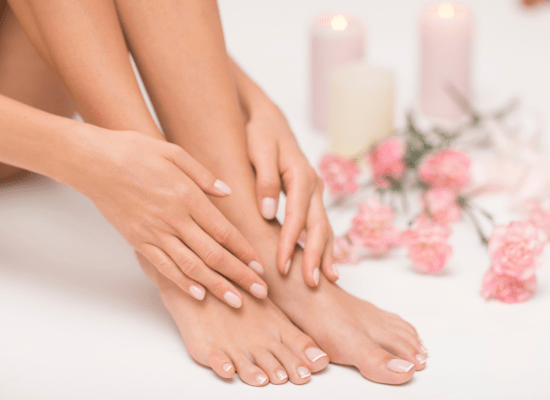
Non-infectious nail conditions manifest in diverse forms, stemming from various underlying issues, and are not transmissible. They include pitting, white spots or lines, nail shedding, pigmented lines, jogger’s nail, and clubbing. Conditions like psoriasis, eczema, thyroid imbalance, trauma, and certain medications are common culprits. These ailments often reflect larger systemic or dermatological problems, requiring a comprehensive examination for accurate diagnosis and effective management.
Read More
Infectious nail conditions mainly encompass fungal and bacterial infections. Fungal infections, or onychomycosis, often display whitish or yellowish nail discoloration, triggered by sweating or prolonged water exposure. Bacterial infections lead to a painful, greenish discoloration, often due to nail biting, water exposure, or trauma. Both conditions reflect microbial invasions, necessitating timely intervention to prevent complications and promote nail health.
Read More
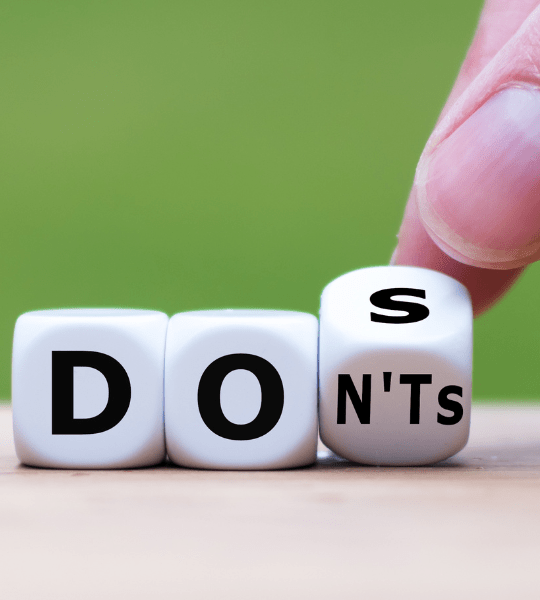
Nail issues can stem from infections, systemic conditions, or external damage. Maintaining healthy nails requires consistent care.
Dos:
Don’ts:
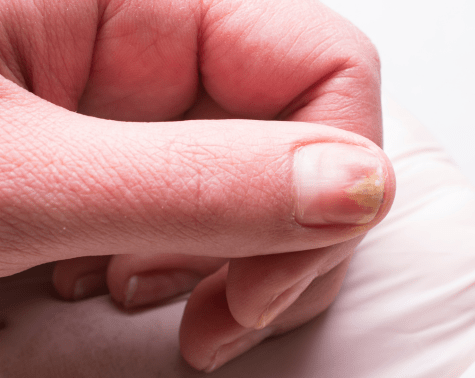
These conditions occur in various forms but are non-infectious in nature.
Pitting of Nails: It is seen a multiple small pits in few or many nails. It is caused by conditions like psoriasis, eczema, vitiligo, alopecia areata etc.
White Spots or Lines: Also known as leukonychia. It is caused primarily by trauma, infections, certain medications, psoriasis etc.
Nail Shedding: The nails tend to separate from the nail bed and they fall off. Main causes are post viral infections, thyroid imbalance, psoriasis, leprosy etc.
Pigmented Lines: It is seen as linear streaks of pigmentation on nails. It is caused by trauma, pregnancy, fungal infections, psoriasis, certain drugs, melanoma etc.
Jogger’s Nail: In this there is typically bleeding under the nail and there is a thick skin formed under the nail. It is often accompanied by fungal infection. It is caused by repeated friction between the shoe and toe nail due to running.
Clubbing of Nail: In this case the nail tends to bulge and becomes more curved than normal. It is mainly a indication of systemic disorder involving heart, lungs etc.
Most nail disorders are resolved by diagnosing and treating underlying conditions with oral medications.
In some cases topical medications are prescribed for Nails
Lastly in rare case Nail Extraction is recommended.
Pitting is mainly caused by psoriasis, eczema, vitiligo etc.
Trauma can damage the nail matrix leading to temporary white spots or lines known as leukonychia.
Nail shedding can be triggered by post-viral infections, thyroid imbalance, psoriasis, or leprosy.
Pigmented lines can be due to trauma, pregnancy, certain drugs, or conditions like psoriasis and melanoma.
Repeated friction from running causes bleeding under the nail and thickened skin, leading to Jogger’s Nail.
Clubbing often indicates systemic disorders involving the heart or lungs.
Non-infectious conditions aren’t transmissible and often result from systemic issues or trauma, unlike infectious conditions.
Yes, treatment involves addressing underlying causes and may include topical treatments or lifestyle modifications.
Yes, certain medications can cause changes or conditions in the nails like leukonychia or pigmented lines.
Yes, maintaining good nail hygiene and avoiding repetitive trauma can help prevent some non-infectious nail conditions.
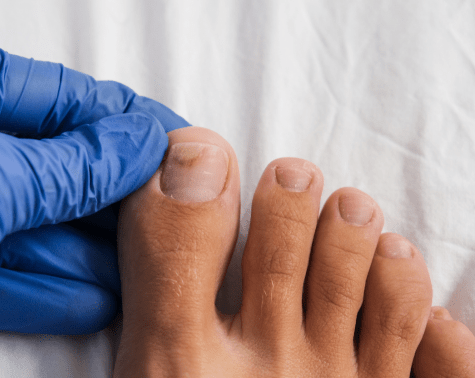
Primarily there are two types of infectious nail conditions:
The first is Fungal Infection of the Nail, which is the most common condition. It is known as onychomycosis. It presents as whitish or yellowish discolouration of the nail.
Few or many of finger or toe nails may be affected. It may be accompanied by a fungal infection on other parts of the body. One of the major causes is sweating and prolonged contact with water.
The second type of nail infection is bacterial nail infection. It presents as greenish discolouration of the nail accompanied by pain and swelling of the nail folds. Some major causes are nail biting , prolonged contact with water, trauma etc.
In this case the nail tends to grown into the nail bed. It is a painful occurrence which occurs because of bacterial infection following trauma to the nail.
Most Nail DIsorders are resolved by diagnosing and treating underlying conditions with oral medications.
In some cases topical medications are prescribed for Nails
Lastly in rare case Nail Extraction is recommended.
Diagnosis often involves a visual examination, microscopy, and fungal culture of nail clippings.
Yes, fungal infections can spread to other parts of the body, like the skin or other nails.
Common causes include nail biting, trauma, and prolonged contact with water which can lead to bacterial invasion.
Treatment usually includes oral antibiotics, topical antiseptics, and in severe cases, surgical intervention.
Yes, without proper treatment and preventive measures, infectious nail conditions can recur.
Prevention involves keeping nails dry, avoiding tight footwear, and avoiding contact with infected nails.
Yes, individuals with weakened immune systems, diabetes, or circulatory problems are more susceptible.
Treatment duration varies but can last several months as nails grow slowly and fungal infections are stubborn.
Yes, untreated bacterial infections can lead to cellulitis, an infection of the skin’s deeper layers.
Fungal infections often have a white or yellow discoloration, while bacterial infections turn nails green with associated pain.


MD, DNB - Dermatology & Venereology
Dr. Sejal has dual degrees of MD and DNB in Dermatology and Venereology. She has worked with some of the senior most doctors in the largest government and private hospitals for more than 15 years. Over these years at InUrSKn, she has treated thousands of patients for a variety of conditions and needs across dermatology, venereology, cosmetology and trichology domains.
Dr. Sejal believes in a minimum intervention approach to health and believes that educating and empowering the patient is the key to good health.
Every patient at InUrSkn is seen personally by Dr. Sejal without any time limit, where she discusses the patient’s concern in detail along with understanding the history of their health and carrying out a personal examination.
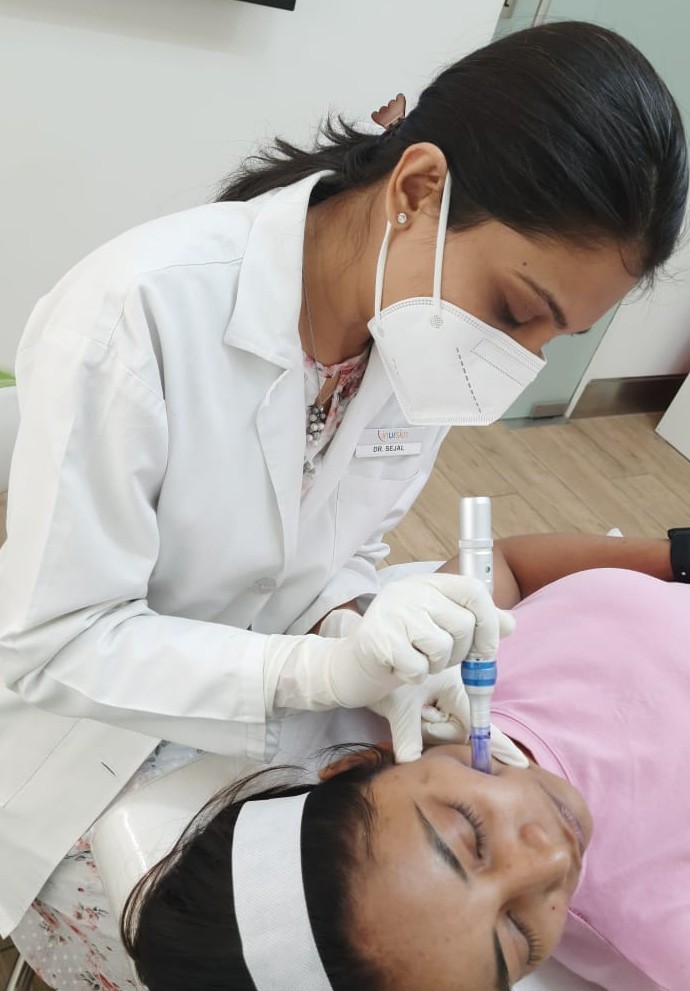
At InUrSkn, we believe that all patient care must be:
– Holistic
– Personalized
– Humane
– Minimal
Dr. Sejal and her team live by the philosophy of never prescribing medications or procedures that may not be required. When addressing a concern, Dr. Sejal ensures that a detailed history and context are thoroughly understood. Medical tests are prescribed by Dr. Sejal only when she believes there is more to the concern that needs to be addressed, ensuring the patient truly benefits.
Multiple spacious procedure rooms
Full-fledged operation theatre
In-house laboratory
Latest technology
100+ Skin, Hair & Body Procedures offered
Frequent disinfection of all clinic spaces with UVC light and WHO-approved chemicals
Large waiting and treatment areas to ensure social distancing
Regular health checks for all patients and staff
Safer than salons, chain-clinics & hospitals
PPEs for patients and staff
Personal attention from Dr. Sejal Saheta (MD, DNB) - with 15+ years of experience
CIDESCO-certified aestheticians with minimum 3 years work experience
500+ Positive Reviews on Practo and Google
5000+ Patients treated last year alone
8000+ Procedures completed
| Prices | ||
|---|---|---|
| Procedure | ||
| In Clinic Consultation with Dr. Sejal | ||
| In Clinic Consultation with Dr. Sejal | ₹1100 | |
| Online Consultation with Dr. Sejal | ||
| Online Consultation with Dr. Sejal | ₹900 | |
Pricing (Inclusive of taxes)


Yes, certain nail conditions can be indicators of systemic health issues such as liver disease, heart disease, or diabetes.
Yes, maintaining a balanced diet, proper hygiene, and avoiding nail biting or trauma can improve nail health.
Some over-the-counter antifungal or antibacterial products can help, but severe or persistent infections may require prescription medication.
Minimizing nail trauma, keeping nails clean and dry, and avoiding nail biting can reduce the risk of bacterial infections.
Nail hardeners can help prevent nail breakage but misuse can lead to nail damage or worsen existing conditions. Consult a dermatologist for personalized advice.
Yes, nail conditions can affect both fingernails and toenails, though some conditions may be more common in one or the other.
Treatment for leukonychia may involve addressing underlying causes such as trauma or nutritional deficiencies, though white spots often fade as nails grow out.
Yes, skin and nail health are interconnected. Conditions like psoriasis can affect both skin and nails.
Yes, fungal nail infections can be contagious and spread to other nails or people if proper precautions are not taken.
Using a base coat to prevent staining, avoiding harsh polish removers, and giving nails a break from polish can help maintain nail health.
Certain supplements like biotin may help improve nail strength and health, though it’s best to consult with a healthcare provider.
Common conditions include onychomycosis, thickening or yellowing of nails, and ingrown toenails.
Yes, a balanced diet rich in vitamins, minerals, and protein is crucial for healthy nails.
Yes, nails may become thicker, brittle, or change shape with age, due to slowed growth and blood circulation.
Yes, regular exercise can improve blood circulation, which in turn may promote healthier nail growth.

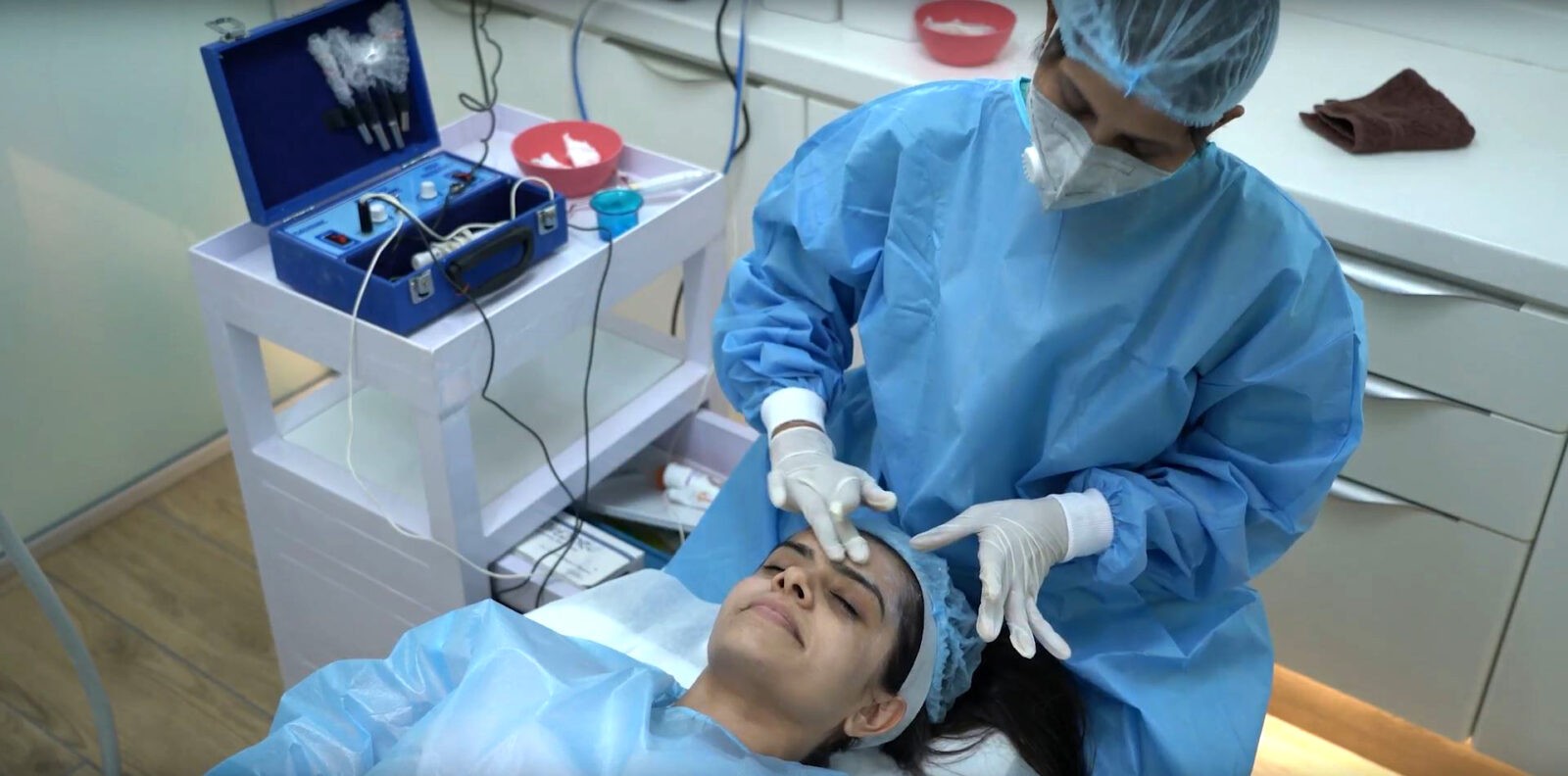
Ready to book an appointment?
BOOK
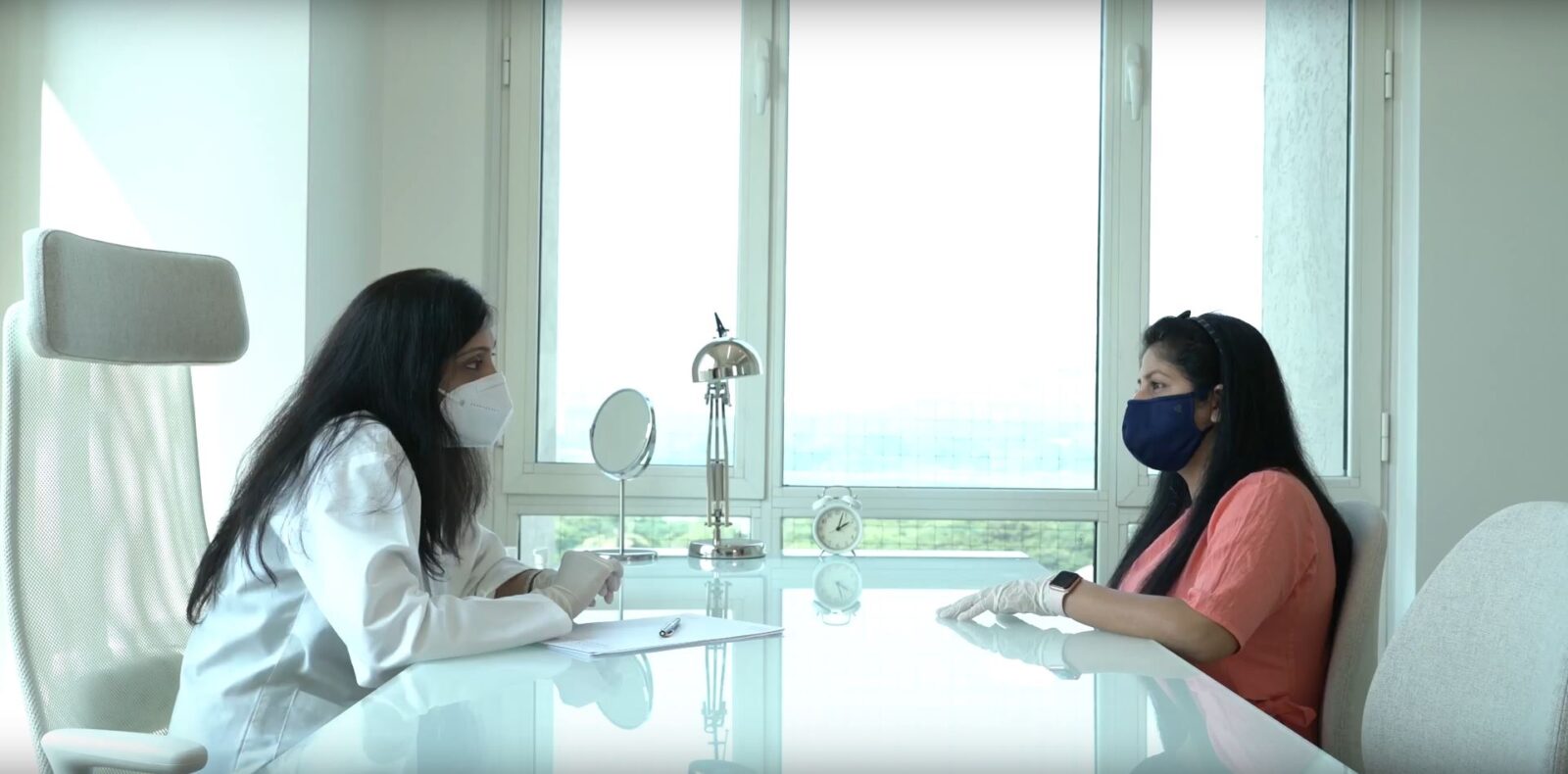
Want to talk about your needs ?
MAKE AN enquiry
